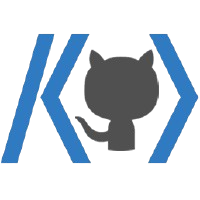728x90
반응형
목차
우리는 깃같은 공유 레포에 올리기 때문에 민감한 정보가 올라가는 것을 피하고 싶다.
따라서 다음과 같이 설정해 주면 된다.
env 사전 설정
1. config 설치
> yarn add @nestjs/config
2. .env 파일 만들기
JWT_SECRET = kkongdol
HASH_ROUNDS = 10
PROTOCOL = http
HOST = localhost:3000
DB_HOST = localhost
DB_PORT=5432
DB_USERNAME=postgres
DB_PASSWORD=postgres
DB_DATABASE=postgres
3. .gitinore에 올리기
.env
4. app.module.ts에서 ConfigModule 불러오기
ConfigModule.forRoot({
envFilePath: '.env',
isGlobal: true,
}),
5. 자동 불러오기 및 오타를 위해서 미리 세팅할 변수들
env-keys.const.ts
// 서버 프로토콜 -> http / https
export const ENV_PROTOCOL_KEY = 'PROTOCOL';
//서버 호스트 -> localhost:3000
export const ENV_HOST_KEY = 'HOST';
//JWT 토큰 시크릿 -> kkongdol
export const ENV_JWT_SECRET_KEY = 'JWT_SECRET';
export const ENV_HASH_ROUNDS_KEY = 'HASH_ROUNDS';
export const ENV_DB_HOST_KEY = 'DB_HOST';
export const ENV_DB_PORT_KEY = 'DB_PORT';
export const ENV_DB_USERNAME_KEY = 'DB_USERNAME';
export const ENV_DB_PASSWORD_KEY = 'DB_PASSWORD';
export const ENV_DB_DATABASE_KEY = 'DB_DATABASE';
두가지 사용방법
1. configservice 이용하기
constructor(
@InjectRepository(PostsModel)
private readonly postsRepository: Repository<PostsModel>,
private readonly commonService: CommonService,
private readonly configService: ConfigService,
) {}
const protocol = this.configService.get<string>(ENV_PROTOCOL_KEY);
const host = this.configService.get<string>(ENV_HOST_KEY);
const nextUrl = lastItem && new URL(`${protocol}://${host}/posts?`);
2.process.env 이용하기
import { ClassSerializerInterceptor, Module } from '@nestjs/common';
import { AppController } from './app.controller';
import { AppService } from './app.service';
import { PostsModule } from './posts/posts.module';
import { TypeOrmModule } from '@nestjs/typeorm';
import { PostsModel } from './posts/entities/posts.entity';
import { UsersModule } from './users/users.module';
import { UsersModel } from './users/entities/users.entity';
import { AuthModule } from './auth/auth.module';
import { CommonModule } from './common/common.module';
import { APP_INTERCEPTOR } from '@nestjs/core';
import { ConfigModule } from '@nestjs/config';
import {
ENV_DB_DATABASE_KEY,
ENV_DB_HOST_KEY,
ENV_DB_PASSWORD_KEY,
ENV_DB_PORT_KEY,
ENV_DB_USERNAME_KEY,
} from './common/const/env-keys.const';
@Module({
imports: [
PostsModule,
ConfigModule.forRoot({
envFilePath: '.env',
isGlobal: true,
}),
//type orm과 nestjs 연결
TypeOrmModule.forRoot({
type: 'postgres',
host: process.env[ENV_DB_HOST_KEY],
port: parseInt(process.env[ENV_DB_PORT_KEY]),
username: process.env[ENV_DB_USERNAME_KEY],
password: process.env[ENV_DB_PASSWORD_KEY],
database: process.env[ENV_DB_DATABASE_KEY],
entities: [PostsModel, UsersModel],
//데이터베이스 싱크 동기화
synchronize: true,
}),
UsersModule,
AuthModule,
CommonModule,
],
controllers: [AppController],
providers: [
AppService,
{
provide: APP_INTERCEPTOR,
useClass: ClassSerializerInterceptor,
},
],
})
export class AppModule {}
강의출처
[코드팩토리] [초급] NestJS REST API 백엔드 완전 정복 마스터 클래스 - NestJS Core 강의 | 코드팩토리 -
코드팩토리 | 자바스크립트, 타입스크립트 다음은 백엔드 개발! NestJS를 이용한 REST API 백엔드 개발, Socket IO 개발 및 배포를 할 수 있게 됩니다., 백엔드가 처음이어도 누구나 OK! 트렌디한 NestJS로
www.inflearn.com
반응형
'코딩 정보 > NestJs' 카테고리의 다른 글
| 이미지 업로드를 구현해 보자 (하) (2) | 2025.02.05 |
|---|---|
| [NestJs] 이미지 업로드를 구현 해보자 (1) | 2025.02.04 |
| [NestJs] 페이지네이션 일반화하기 (0) | 2025.02.02 |
| [NestJs] 페이지 기반 페이지네이션을 만들어 보자 (0) | 2025.01.29 |
| [NestJs] 커서 기반 페이지네이션을 구현해보자 (0) | 2025.01.29 |



